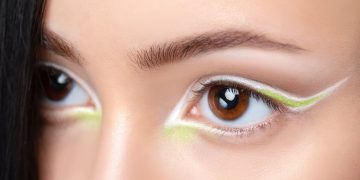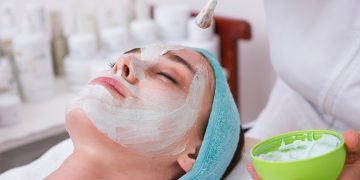Summer brings with it a host of skincare challenges, especially for those with oily skin. The increase in heat, humidity, and sun exposure can lead to excess sebum production, clogged pores, breakouts, and shine. However, with the right products, habits, and adjustments to your routine, you can keep oily skin in check during the hotter months and maintain a healthy, balanced complexion.
In this article, we’ll explore how to manage oily skin in the summer, from adjusting your skincare routine to choosing the right products and adopting healthy habits. Whether you’re dealing with greasy skin, acne flare-ups, or large pores, we’ve got you covered with a comprehensive guide to tackling oily skin during the summer season.
Understanding Oily Skin and How It Reacts to Summer Heat
Why Does Oily Skin Get Worse in the Summer?
Oily skin occurs when your sebaceous glands produce excess sebum, the skin’s natural oil. This oil serves as a barrier against moisture loss and external pollutants. However, when the sebaceous glands go into overdrive, it can lead to an oily sheen, clogged pores, and acne.
During the summer months, hot and humid conditions trigger an increase in sebum production. The body’s natural response to heat is to sweat more in an effort to regulate temperature, but this also increases oil production, especially in the T-zone (forehead, nose, chin). As sweat mixes with excess oil, it can clog pores, resulting in breakouts and a shiny complexion.
Moreover, sun exposure can also exacerbate oiliness. The sun may dry out certain areas of your skin, causing your oil glands to work overtime in order to restore balance, which makes the skin even oilier.
The Summer Skincare Routine for Oily Skin
Managing oily skin in the summer requires a few tweaks to your regular skincare routine. By focusing on hydration, oil control, and proper sun protection, you can keep oily skin in check while ensuring your skin remains healthy and clear. Here are some essential skincare steps to follow:
1. Cleanse Gently but Effectively
Choosing the Right Cleanser:
In summer, it’s vital to cleanse your face properly to remove excess oil, sweat, and dirt, without over-drying or irritating your skin. The wrong cleanser could strip your skin of essential oils, leading to increased oil production as the skin tries to compensate.
What to Look For:
- Gel or Foaming Cleansers: These formulas help eliminate excess sebum without disrupting the skin’s natural barrier.
- Salicylic Acid (BHA): This ingredient helps penetrate deep into the pores to clear out oil and reduce inflammation. It’s especially helpful for preventing acne breakouts during the summer months.
- Tea Tree Oil: Known for its antibacterial properties, tea tree oil can help prevent and treat acne caused by excess oil.
Recommended Products:
- Cleansers with Salicylic Acid: Helps deep cleanse pores and reduces oil buildup.
- Foaming or Gel-Based Cleansers: These tend to be lightweight and non-greasy, making them perfect for oily skin in humid weather.
Example Routine:
- Morning and evening: Use a gel-based or foaming cleanser with salicylic acid to remove excess oil, dirt, and sweat.
2. Exfoliate Regularly (But Gently)
Why Exfoliation Matters in Summer:
Exfoliation helps to remove dead skin cells that can clog pores and contribute to breakouts, especially when mixed with sweat and excess oil. However, it’s important to exfoliate correctly. Over-exfoliating can lead to irritation, dryness, and more oil production as the skin tries to compensate.
What to Look For:
- Chemical Exfoliants (AHAs and BHAs): These exfoliants dissolve dead skin cells and excess oils, making them gentler than physical scrubs.
- Salicylic Acid (BHA): This helps to penetrate pores deeply and clear out oil buildup.
How Often Should You Exfoliate?
Exfoliate 2-3 times a week, depending on your skin’s tolerance. Over-exfoliating can disrupt the skin’s natural barrier, leading to more oil production.
Recommended Products:
- Exfoliating Toners with Salicylic Acid: These can be used after cleansing to exfoliate and refine pores.
- Exfoliating Pads: Pre-soaked pads containing mild chemical exfoliants can make exfoliation easy and effective.
3. Use Lightweight, Oil-Free Moisturizers
Why Moisturizing Is Still Important for Oily Skin:
It’s a common misconception that oily skin doesn’t need moisturizing. In fact, skipping moisturizer can lead to dehydration, which causes your skin to overcompensate by producing even more oil.
What to Look For:
- Oil-Free, Non-Comedogenic Moisturizers: These are lightweight, hydrating formulas that won’t clog pores or make your skin greasy.
- Gel-Based Moisturizers: Gel moisturizers are often more lightweight and refreshing, perfect for oily skin that needs hydration without the heaviness of cream-based moisturizers.
Recommended Ingredients:
- Hyaluronic Acid: A lightweight, non-greasy humectant that draws moisture into the skin without adding excess oil.
- Glycerin: A hydrating agent that helps to keep the skin moisturized and smooth without causing greasiness.
Example Product:
- Oil-Free Gel Moisturizer: A lightweight gel that hydrates the skin without clogging pores.
When to Apply:
- After cleansing and exfoliating, apply a small amount of lightweight moisturizer to damp skin to lock in hydration.
4. Control Oil with Mattifying Products
How to Keep Shine at Bay:
Oily skin tends to get shiny throughout the day, particularly in the T-zone. While some level of shine is natural, excessive oiliness can be frustrating, especially in the hot and humid summer months.
What to Look For:
- Mattifying Primers: These are designed to reduce shine and help makeup stay in place. They typically contain ingredients like silica or clay to absorb excess oil.
- Oil-Control Powders: Loose or pressed powders that absorb oil and reduce shine. These are perfect for touching up throughout the day.
- Blotting Papers: These absorb excess oil quickly without disturbing your makeup.
Recommended Ingredients:
- Clay: A natural oil-absorbing ingredient that helps keep the skin matte throughout the day.
- Silica: Often found in primers and powders, silica is excellent at controlling shine.
Example Product:
- Mattifying Primer: A lightweight primer that keeps your makeup fresh and helps control oil throughout the day.
How to Use:
- Apply mattifying products before makeup or throughout the day for oil control and shine reduction.

5. Always Wear Sunscreen (Even on Cloudy Days)
Why Sunscreen Is Crucial for Oily Skin in the Summer:
Sun exposure can worsen oily skin and lead to increased breakouts, pigmentation, and premature aging. Despite your skin’s oil production, you should never skip sunscreen—especially in the summer.
What to Look For:
- Oil-Free Sunscreens: Choose lightweight, oil-free sunscreens that provide broad-spectrum protection without adding extra grease.
- Non-Comedogenic Formulas: These won’t clog pores or contribute to breakouts.
- Matte Finish Sunscreens: If you struggle with shine, go for a sunscreen that offers a matte or semi-matte finish.
Recommended Ingredients:
- Zinc Oxide and Titanium Dioxide: These are physical (mineral) sunscreen ingredients that provide broad-spectrum protection without irritating sensitive or oily skin.
Example Product:
- Oil-Free Sunscreen with SPF 30 or higher: Choose a broad-spectrum sunscreen that provides all-day protection.
How to Use:
- Apply sunscreen every morning as the last step in your skincare routine, and reapply throughout the day if you’re spending extended periods of time outdoors.
6. Incorporate Oil-Control Masks
Why Clay Masks Help in Summer:
Oil-absorbing masks can be incredibly beneficial for those with oily skin, especially during summer when oil production is at its peak. These masks detoxify the skin, prevent pore clogging, and leave your face feeling fresh and matte.
What to Look For:
- Clay Masks: Bentonite or kaolin clay helps absorb oil and detoxify the skin.
- Charcoal Masks: Activated charcoal draws out impurities and oil from deep within the pores.
Recommended Products:
- Clay Face Masks: These are perfect for weekly use to control oil and minimize pores.
- Charcoal Face Masks: Great for clearing out excess oil from the pores.
How to Use:
- Apply once or twice a week, especially to the T-zone, to deeply cleanse and balance oil production.
Conclusion: Stay Ahead of the Summer Skincare Challenges
The key to managing oily skin in the summer lies in using lightweight, oil-free products and developing a skincare routine tailored to your skin’s unique needs. By cleansing effectively, exfoliating regularly, hydrating with oil-free moisturizers, controlling shine, and always wearing sunscreen, you can prevent common summer skincare issues such as excess oil, clogged pores, and breakouts.
Consistency is key, and with the right products and habits, you can maintain a balanced, clear, and shine-free complexion all summer long. Remember, what works for your skin today may need adjusting in the future, so don’t hesitate to tweak your routine as needed to achieve the best results for your oily skin.












































